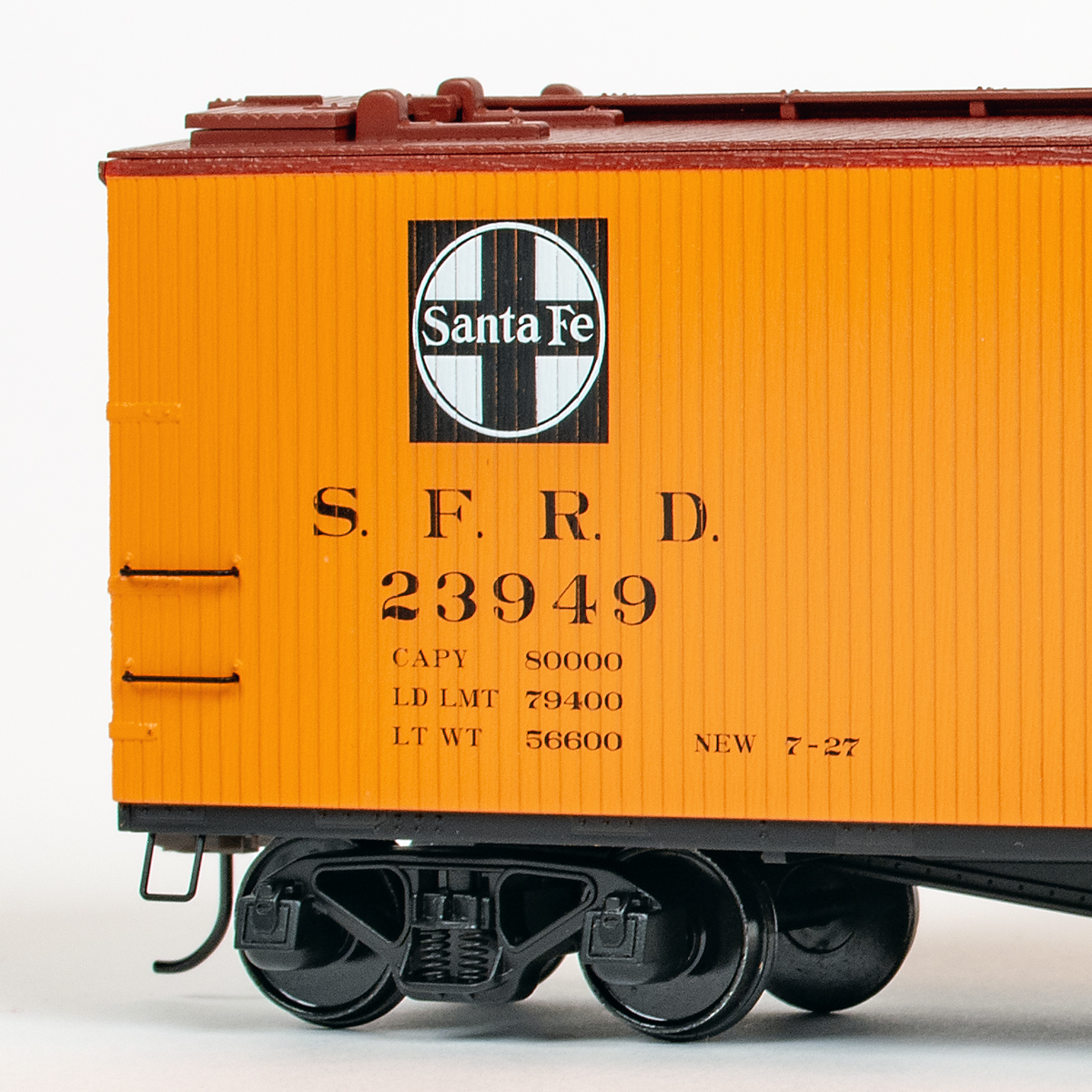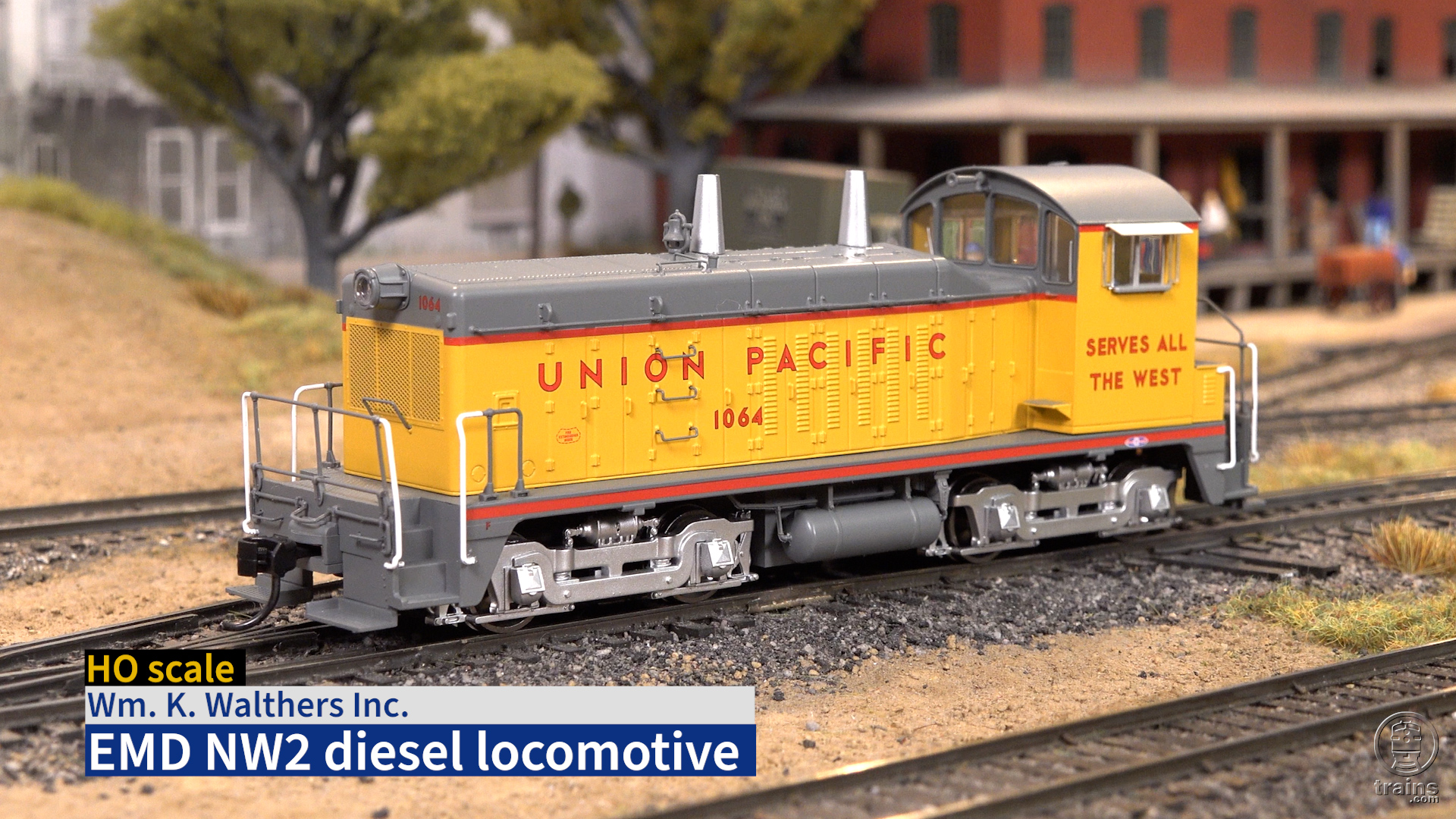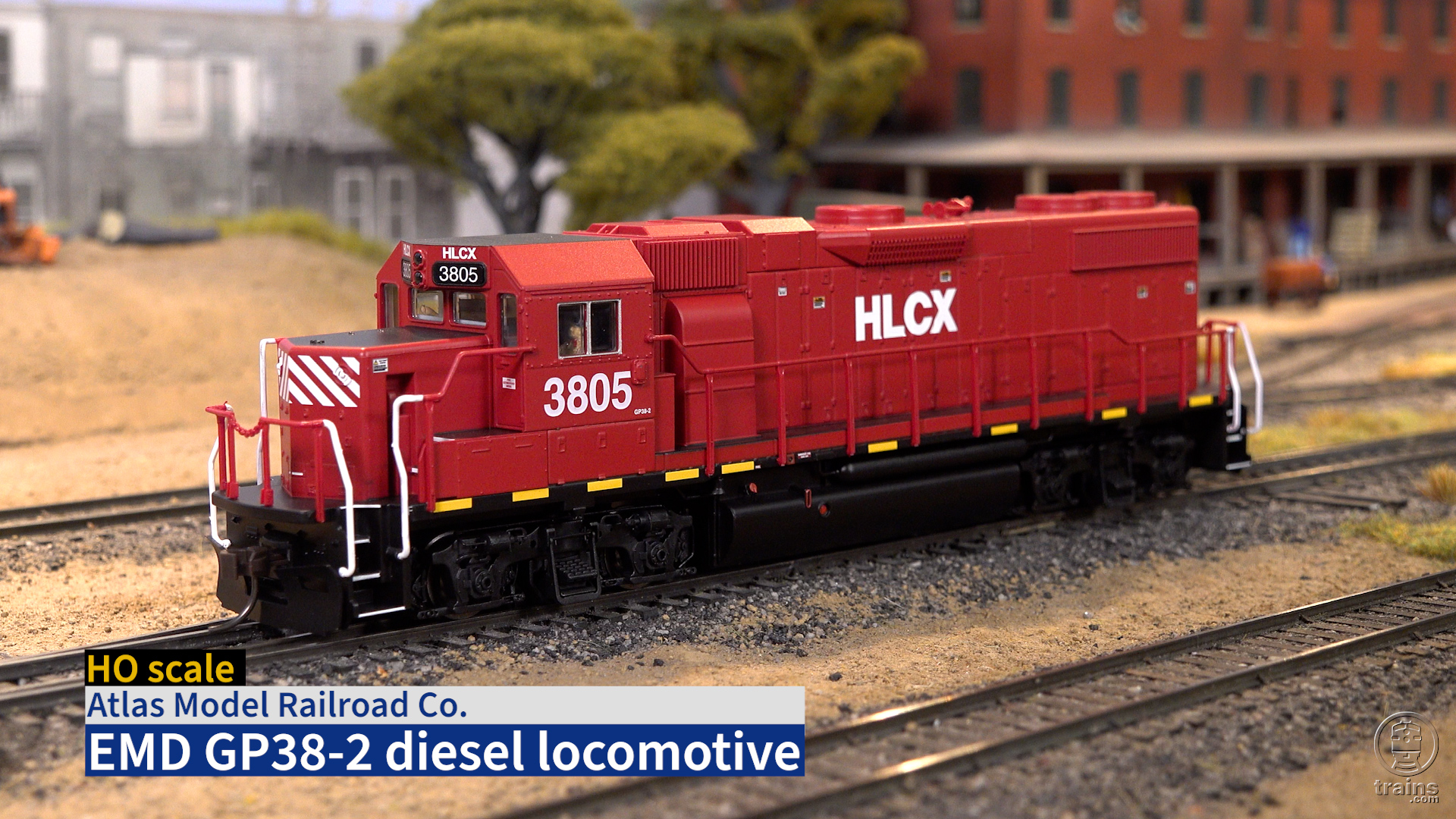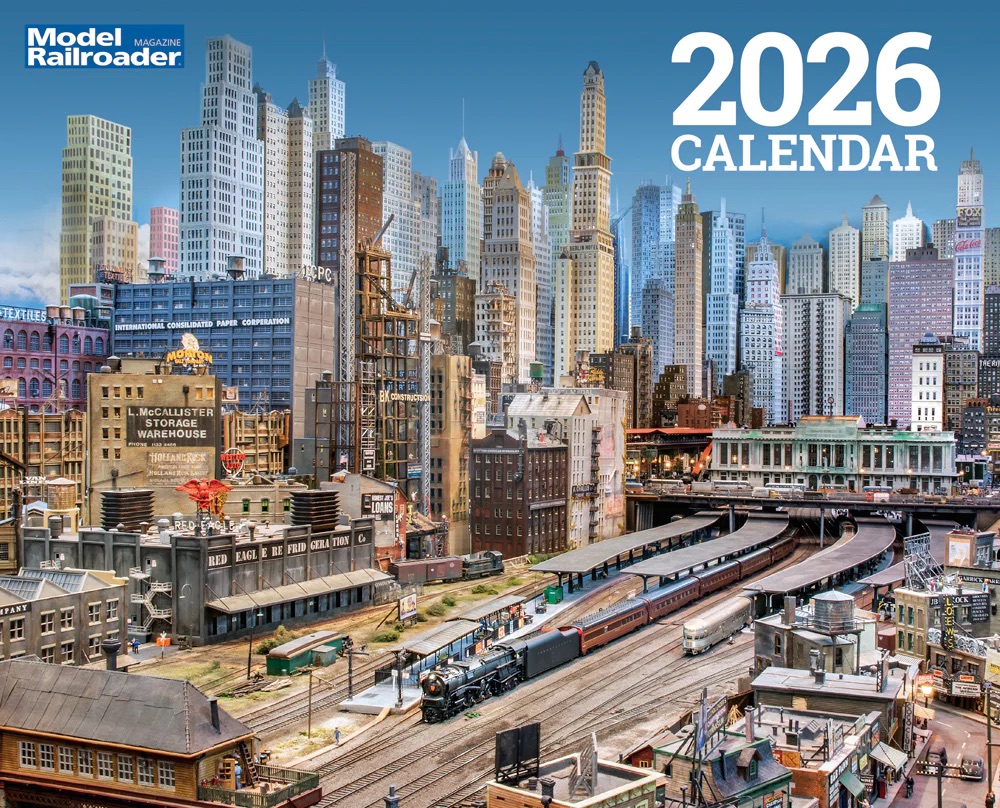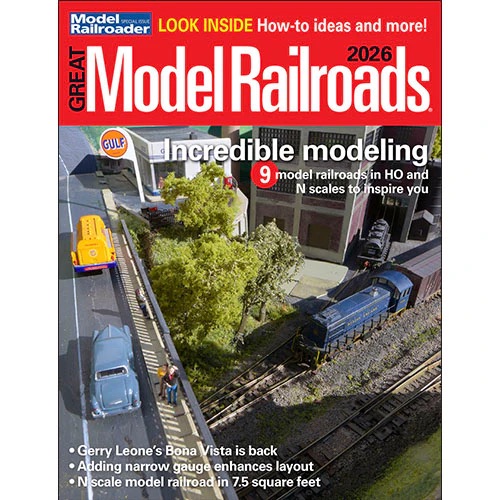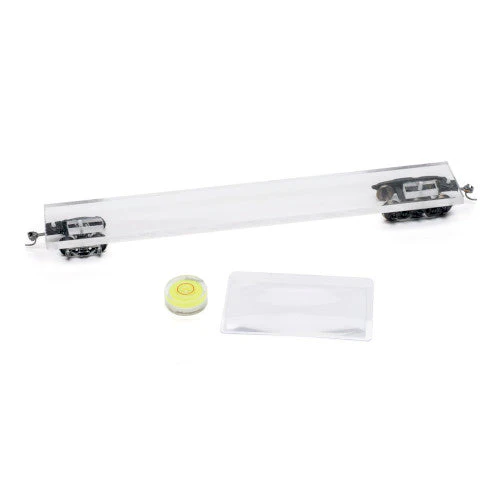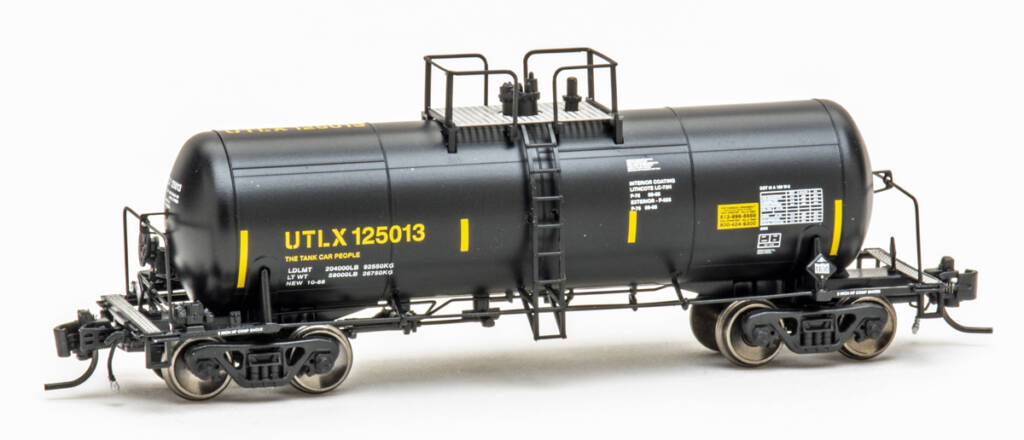
A 13,600-gallon sulfuric acid tank car is now part of the N scale Athearn Genesis line. The newly tooled model, based on a Union Tank Car Co. prototype, features a plastic body; many separate, factory-applied details; and body-mounted McHenry double-shelf couplers, available for the first time in 1:160.
Prototype history
Athearn offers the sulfuric acid tank car in two body styles. The early version, based on a prototype produced between mid-1979 and late 1988, has a tank body with four sections. Our review sample, Union Tank Car Co. 125013, is an example of an early body style. The late version, built between early 1988 and late 1999, has three body sections.
Sulfuric acid has a variety of uses, including fertilizer production, metal processing, and oil and ore refining. The full-size cars can be found throughout the North American rail network.
Model features
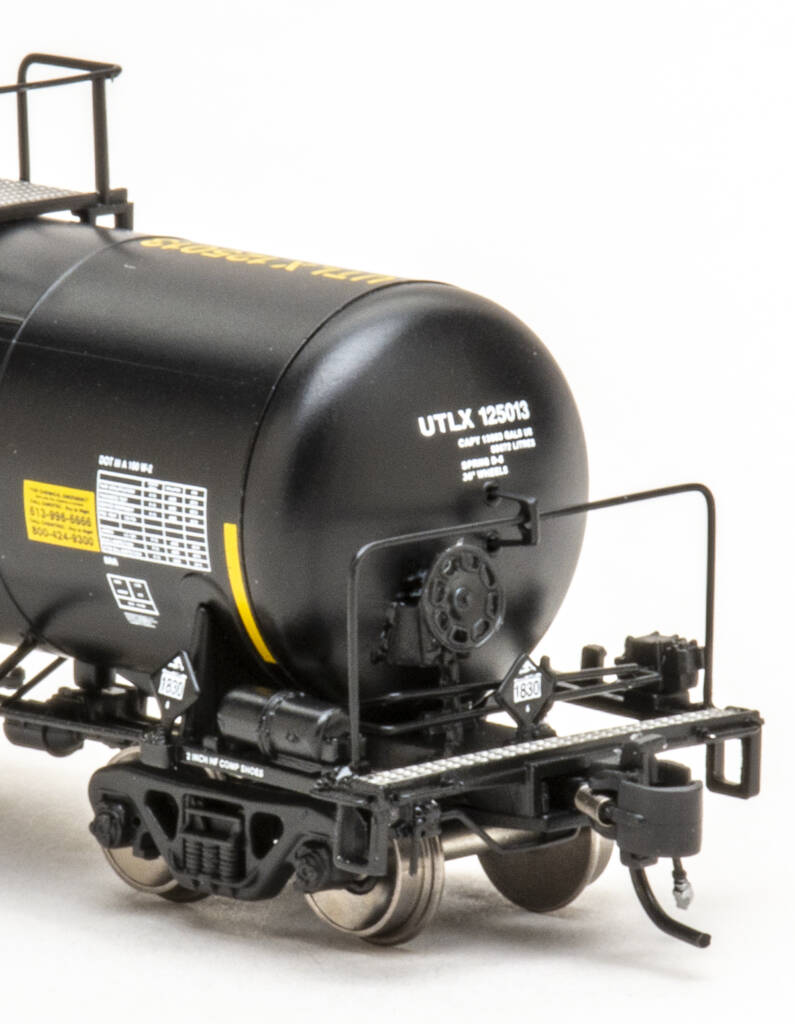
The Athearn model has a plastic body with separate tank heads. Two plastic handrail, corner post, and support bracket castings frame the dome and safety vent.
A see-through, etched-metal operating platform is attached to the plastic castings.
The end platforms, saddles, stub sills, bolsters, and draft-gear boxes are a single plastic casting attached with screws. The end platforms have a see-through metal walkway and factory-installed and painted formed-wire grab irons.
The end platform safety rail is also formed wire, threaded through a standoff attached to the tank head. The plastic draft-gear box covers are secured with screws. A wire uncoupling lever runs from a bracket on the end platform to the bottom of the cover.
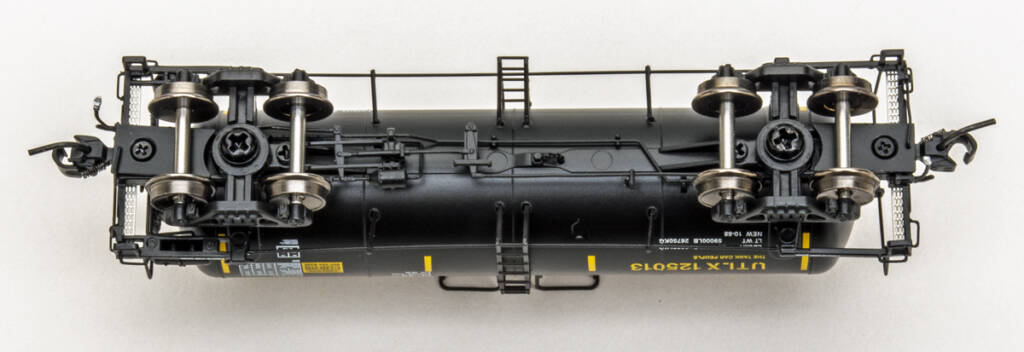
The brake system on tank cars is easy to see, and Athearn didn’t skimp on the details. The air reservoir and control valve are located between the saddle and platform on the B end. The auxiliary and emergency reservoir pipes, both formed wire, run parallel to the end platform.
Underneath, the brake pipe and brake cylinder pipe are formed wire. The remainder of the brake system is an engineering plastic casting attached to the underbody with two pins.
A closer look
Our sample is neatly painted black with yellow and white graphics. The lettering placement matches prototype images I found online. All but the tiniest printing is legible under magnification.
The model has a New 10-88 stencil, but the full-size car has New 09-88. The load limit and light weight are also different than what’s found on the prototype UTLX 125013, but within the range of other cars from the series.
The model features printed placards with UN number 1830, which is sulfuric acid with more than 51% acid. The 8 below the number indicates the hazard class (corrosive substance).
I was unable to find prototype drawings of the tank car. The distance between the truck centers measures a scale 27′-0″; over the sills is a scale 39′-0″. From the railhead to the top of the operating platform handrails is a scale 14′-6″.
To see how the car performed in an operating layout environment, I put it in a train on our Milwaukee, Racine & Troy State Line Route. The car ran without issue while being pushed and pulled in a train. The double-shelf couplers also worked well. They were easy to uncouple using a wood skewer and commercial plastic pick.
The Athearn N scale sulfuric acid tank car is a well-detailed model. The Genesis-series car would look right at home in front of an industry that calls for the product. Another option is to use these cars as bridge traffic in freight trains.
Facts & features
Price: Single car, $44.99; three-pack, $124.99
Manufacturer
Athearn Trains
2904 Research Rd.
Champaign, IL 61822
athearn.com
Era: mid-1979 to present
Road names: Union Tank Car Co., Asarco Inc., Ferromex, Procor, and Rhodia Inc. Six road numbers per scheme (three single cars and one three-pack)
Features:
- 36″ metal wheelsets, correctly gauged
- Body-mounted McHenry double-shelf couplers, at correct height
- Weight: 0.9 ounce, correct per National Model Railroad Association Recommended Practice 20.1







